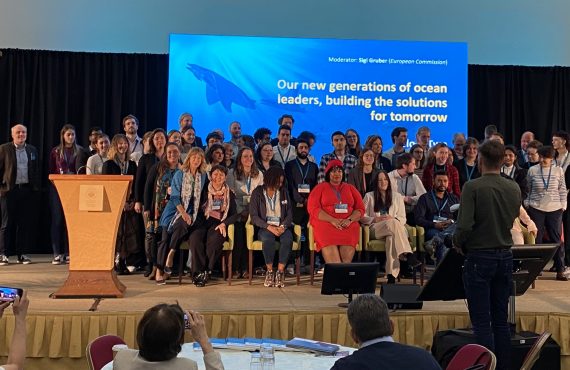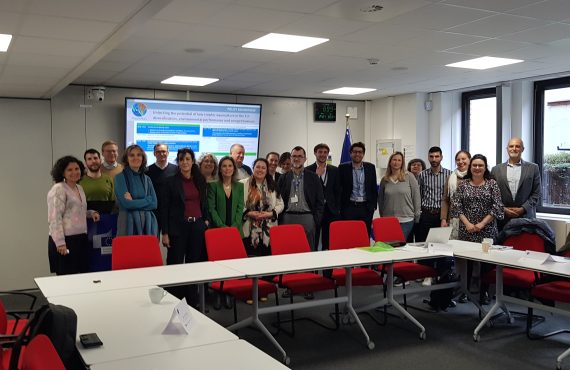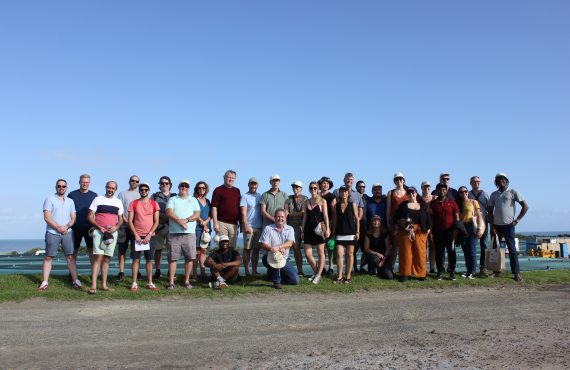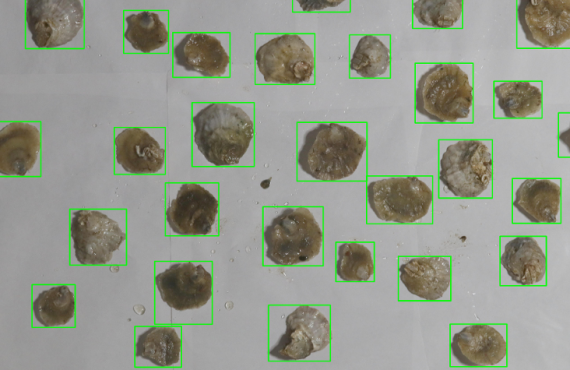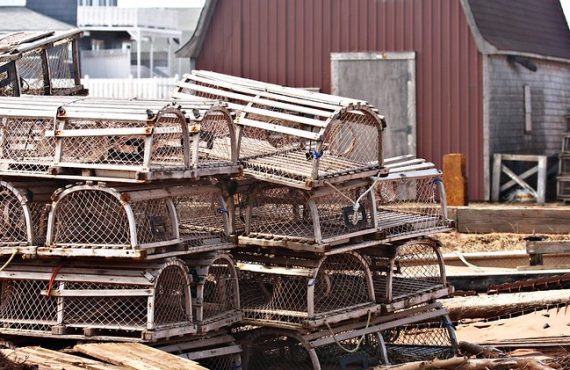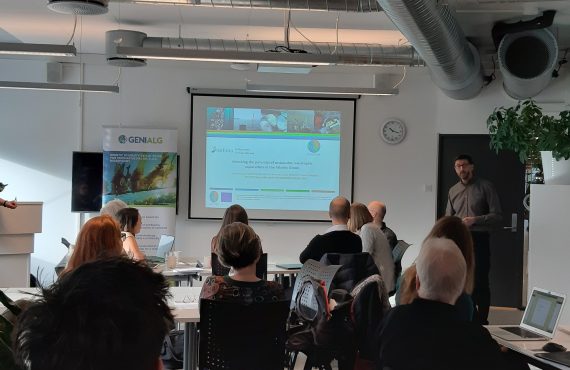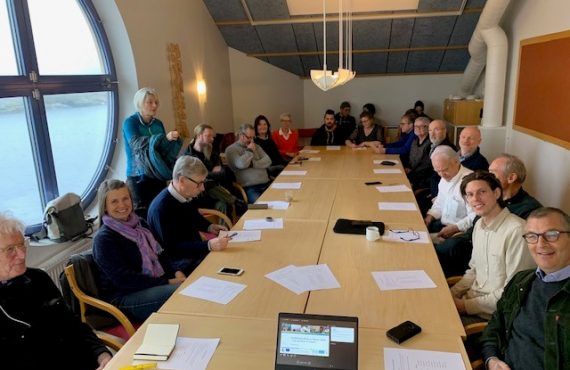The Ocean Rainforest team. Photo by Ocean Rainforest.
“The ocean is my business model and my designer partner, and it’s brutal”, Bren Smith, of Greenwave, a fisherman turned seaweed farmer, defined the challenge seaweed farmers experience when going offshore. AquaVitae’s case study on ‘Offshore macroalgae cultivation, led by Ocean Rainforest, hosted more than 150 participants in an online workshop to review the project development, focused on offshore site selection, upscaling macroalgae cultivation in offshore environments, and including seaweed in abalone feed.
Offshore site selection
The tools presented in the webinar allow selecting sites based on the specific needs of macroalgae offshore cultivation (for example, current or salinity), for both the Faroe Islands and the US coast (Maine). Both tools, by Fiskaaling and the University of Edinburgh, have the potential for universal applicability.
Upscaling sustainable, efficient, and low-cost offshore macroalgae production
Promising opportunities for re-using second-hand marine equipment in the installation of seaweed farms have been identified by Ocean Rainforest. Furthermore, the Faroese company also pinpointed logistical ‘hot-spots’ in the seaweed supply chain: seeding, harvesting and landing; serious challenges in the upscaling of seaweed cultivation.
Seaweed in animal and human feed
A successful expansion of the seaweed cultivation in the Atlantic rim has to be driven by market demands. According to the panellists, in short to medium term this demand will most likely be catalysed by seaweed use as an additive in animal and human feed to increase health and reduce methane emissions from cattle, improving environmental sustainability.
Future opportunities and challenges
Participants from international and multidisciplinary backgrounds joined this workshop, brought together by their enthusiasm for the seaweed industry, a sector with great potential when we look at “population growth and environmental impact,” said Javier Infante, of Ocean Rainforest.
An online poll, conducted among the workshop participants, identified upcoming opportunities and challenges. Most participants expected that:
- seaweed producers will receive CO2 credits as revenue income in the next 10 years,
- large-scale mechanical harvesting (>100 tonnes ww/day) is a precursor to scale up offshore cultivation, and
- seaweed will become an important functional feed ingredient for both marine and terrestrial animals.
Meanwhile, it remained ambivalent whether seaweed should be prioritized as food or as functional feed, and whether the competition among different “ocean space” actors will hamper scale-up of offshore seaweed cultivation.
The full recording is accessible here:








